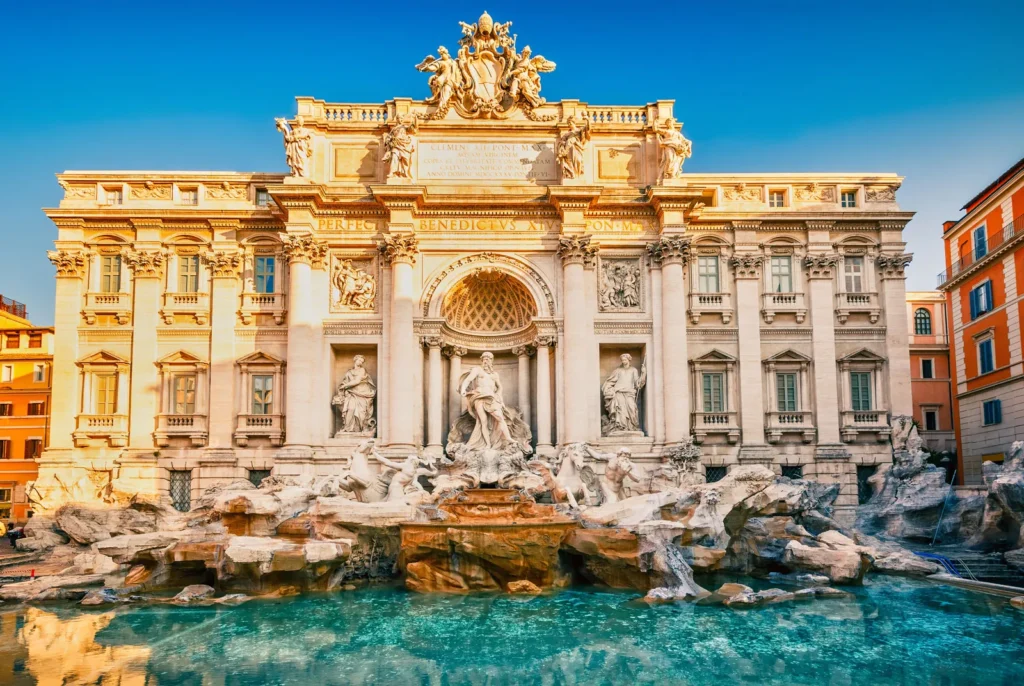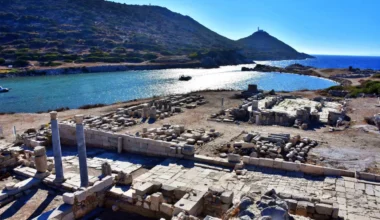Rome, a city where history breathes through the ruins of its ancient empire, offers an array of enchanting experiences, none more magical than the tradition of tossing a coin into the Trevi Fountain. This iconic act, immortalized by tourists and romanticized in films, holds a special place in the hearts of those who visit. Let’s delve into the origin of this tradition, what it signifies, and how it captures the essence of Rome’s eternal charm.
The Origin of the Coin Tossing Tradition
The Trevi Fountain’s Historical Significance
The Trevi Fountain, or Fontana di Trevi, is not only Rome’s largest Baroque fountain but also a masterpiece that embodies the artistic and architectural grandeur of the Eternal City. Commissioned by Pope Clement XII in 1732 and completed by Nicola Salvi, this majestic fountain is more than just a decorative piece; it’s a celebration of water’s life-giving force, illustrated through its elaborate sculptures and mythological figures.
The Birth of the Coin Tossing Ritual
The tradition of tossing a coin into the Trevi Fountain is believed to have originated in the ancient Roman times. However, its modern interpretation was popularized in the 1950s, especially after the release of films like “Three Coins in the Fountain.” . The ritual symbolizes the visitor’s return to Rome, love, and marriage, depending on the number of coins thrown.
The Meaning Behind the Gesture
Tossing only one coin into Trevi Fountain: A Promise to Return to Rome
The most widespread interpretation of the coin toss is the promise of returning to Rome. By tossing a coin over their left shoulder with their right hand, visitors are believed to ensure their eventual return to this historic city, embracing its history, culture, and beauty once more.
Tossing Two Coins into Trevi Fountain: Love and Romance
Beyond the promise of return, a second coin toss is often associated with finding love in Rome. This romantic notion, though more modern, beautifully ties the fountain to the universal desires for love and companionship, making it a popular spot for proposals.
Tossing Three Coins into Trevi Fountain
Tossing three coins into the Trevi Fountain carries the further wish of marriage or divorce. After the first coin, It is to ensure a return to Rome, and the second for finding love, the third coin is thrown with the hope of marriage to that new love or to ensure a divorce from a current unwanted relationship. This step in the tradition adds a layer of commitment or closure to the wishes, reflecting deeper desires for personal happiness and significant life changes.
The Trevi Fountain Today

What happens to the money thrown into Trevi Fountain?
The coins thrown into the Trevi Fountain are collected nightly and donated to Caritas, a Catholic charity. This charity uses the funds to support various social welfare programs and assist those in need in Rome and beyond. The tradition of tossing coins not only fulfills the wishes of the visitors but also contributes to a greater cause, making it a meaningful practice that benefits the local community. The amount collected is substantial, highlighting the popularity of the fountain and the generosity of visitors from around the world.
A Sight to Behold
The Trevi Fountain, with its grandeur and detailed sculptures, stands as a testament to Rome’s rich history and artistic achievement. Neptune, the god of the sea, dominates the scene, with Tritons and sea horses symbolizing the moods of the sea. The water’s continuous flow represents life itself, making the fountain a living piece of art.
The Impact of Tourism
The tradition of coin tossing has made the Trevi Fountain one of Rome’s most visited landmarks, drawing millions of tourists each year. The coins, collected nightly, support charitable activities in Rome, showing how a simple act of hope can have a meaningful impact on the community.
Embracing the Tradition
A Moment of Reflection
Tossing a coin into the Trevi Fountain is more than just following a tourist tradition; it’s a moment of reflection, of hopes and dreams cast into the flowing waters. It’s a personal ritual that connects individuals to the heart of Rome, promising not just a physical return but a lifelong bond with the city.
The Eternal City Awaits
Whether you believe in the legend or simply wish to partake in a cherished tradition, tossing a coin into the Trevi Fountain is an experience that embodies the magic of Rome. It’s a gesture that ties the past to the present, inviting everyone to be part of the eternal city’s ongoing story.
In embracing this tradition, we not only contribute to the local community through our donations but also keep the spirit of Rome alive within us. We turn our backs to the fountain and let our coins fly. We leave behind a piece of our hopes and dreams, in the heart of a city mastering the art of eternal allure. If you are into Baroque style, you will fall in love with Salzburg Austria!
How to get to the Trevi fountain?
Getting to the Trevi Fountain, one of Rome’s most iconic landmarks, is relatively straightforward due to its central location in the city. Here are a few ways to reach the fountain:
Metro
- The closest metro station to the Trevi Fountain is Barberini on Line A of the Rome Metro. From Barberini, it’s about a 10-minute walk to the fountain. Exit the station, follow Via del Tritone, and then turn left onto Via del Lavatore, which leads directly to the fountain.
Bus
- Rome’s bus network offers several lines that stop near the Trevi Fountain. Buses such as 62, 63, 71, 83, 85, 160, 492, and 628 can drop you within walking proximity. Look for stops on Via del Tritone or Via del Corso, both of which are close to the fountain.
Foot
- If you’re already exploring central Rome, walking is perhaps the best way to discover the city and the Trevi Fountain. The fountain is within walking distance from other major landmarks like the Spanish Steps and the Pantheon. Walking allows you to immerse yourself in the city’s vibrant streets and historical ambiance. Here is the google maps link of Trevi fountain.
Taxi or Ride-Sharing Services
- Taxis or ride-sharing services are convenient options. Especially if you’re coming from farther away or prefer not to use public transport. They can drop you off near the fountain just a short walk from the fountain itself.
Tips for Visitors
- The Trevi Fountain is often crowded. Consider visiting early in the morning or late in the evening for a more peaceful experience.
- Pay attention to your belongings, as the area can attract pickpockets due to its popularity.

